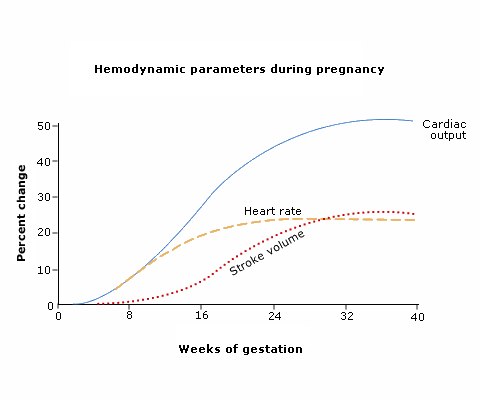Cardiovascular Changes
There are marked changes in the cardiovascular system during pregnancy and, as with other changes, these are present quite early in pregnancy. The graph in Fig 1 illustrates the main changes, in the absence of aortocaval compression.
What is the relationship between the three variables plotted in this graph?
Click here for the answer.
During labour, there is a further 40% rise in cardiac output. This effect is largely due to pain, and can be reduced by effective analgesia. In addition, there is a rise in cardiac output immediately following delivery, related to ‘autotransfusion’ of blood from the uterus.

CO = HR × SV
CO = Cardiac output
HR = Heart rate
SV = Stroke volume
In early pregnancy, the rise in cardiac output is mainly due to a rise in resting heart rate. During the second trimester, stroke volume rises.
The resting heart rate in pregnancy is increased to around 85 bpm.
Tachycardia is relatively common and bradycardia is uncommon in obstetric patients compared with non-obstetric patients.